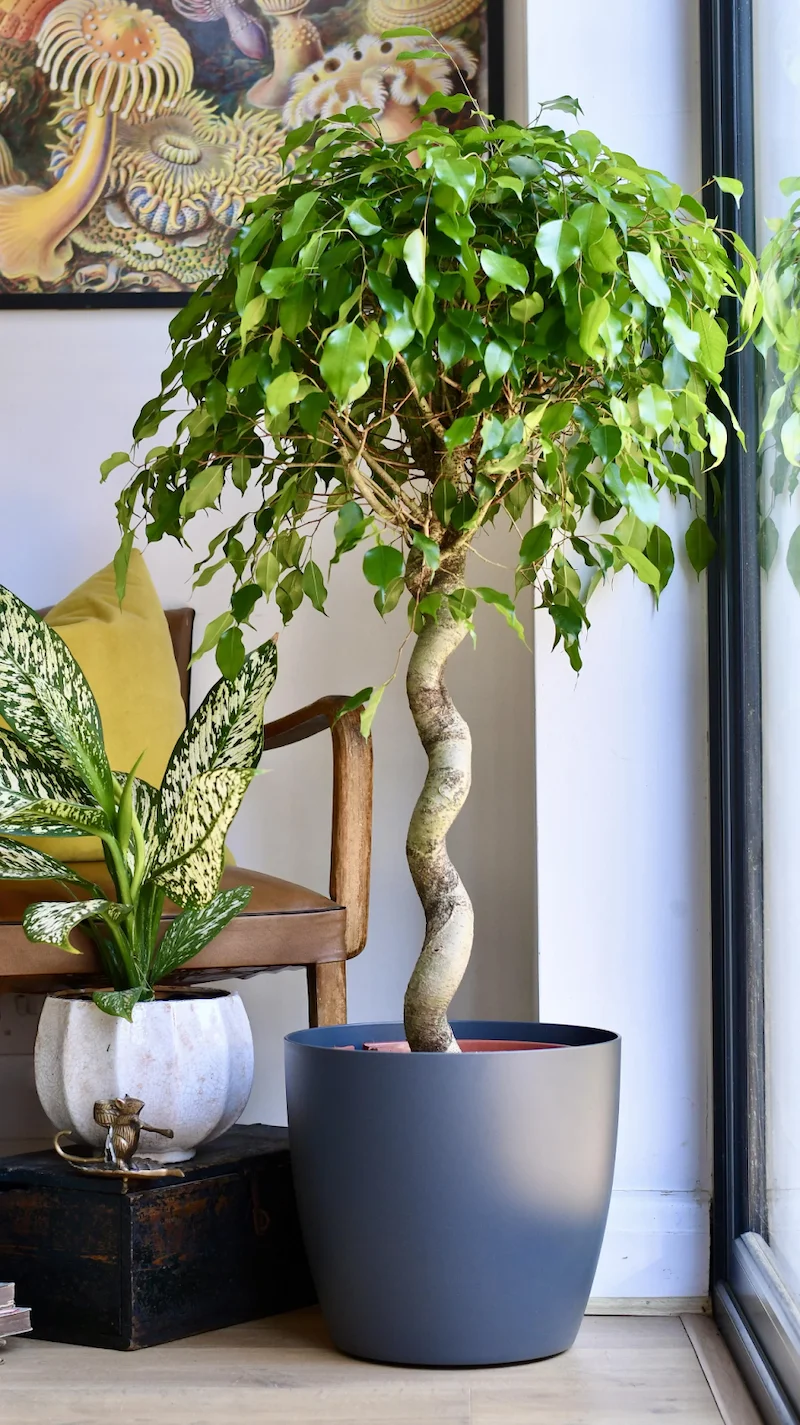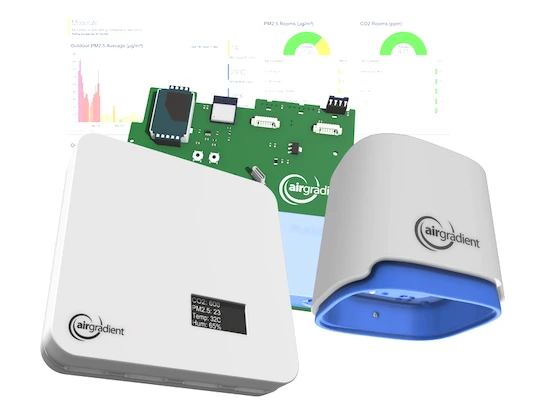Open and Accurate Air Quality Monitors
We design professional, accurate and long-lasting air quality monitors that are open-source and open-hardware so that you have full control on how you want to use the monitor.
Learn MoreA common misconception about plants is that they clean or purify the air around us. The reason for this are several studies like the NASA Clean Air Study which tested various plants to find possible ways of cleaning the air in sealed environments like space stations.
Even though plants can improve indoor air quality their effect is relatively small compared to other methods like air purifiers and filters.
In this context, plants or potted plants simply means any indoor plants that are grown in containers, such as pots or planters, and kept inside homes, offices, or classrooms for decoration — it’s important to note that the effects on air quality can be different for other types of plants, like vertical green walls, or organisms like fungi and moss.
A lot of studies like the Interior Landscape Plants for Indoor Air Pollution Abatement or also known as NASA’s Clean Air Study (1989) showed plants removing volatile organic compounds (VOCs) in sealed chambers.
The tests gave promising results: Most plants made a noticeable effect during the experiments. But unfortunately these tests don’t reflect real homes with circulation and human activity.
So when Cummings and Waring (2019) reanalyzed years of experiments they found that a single plant’s effect was very small. This means that in a normal living space, plants alone do virtually nothing. As one review by Waring concludes, plants “remove VOCs at such a slow rate that they can’t compete with the air exchange mechanisms already happening in buildings.” In practice, other ways of cleaning the air like running an air purifier or HEPA (high efficiency particulate air) filters are hundreds or thousands of times more effective than relying on houseplants.
Experts estimated that you would need about up to 1,000 plants per square meter of space to match a typical building’s air exchange rate.
Houseplants do remove small amounts of VOCs and change indoor air, but not necessarily in the way most imagine. While early studies implied that some plants can absorb VOCs in controlled circumstances, the actual impact is usually very small compared to typical methods for air filtration or exchange.
In practice, a few potted plants can have a mild impact on relative humidity, CO2 and our oxygen levels during daylight hours but won’t have meaningful effects on their own. In fact, poorly maintained plants can even induce pollen or mold spores in the air. While they make spaces feel healthier, the improvement of indoor air quality remains dependent on proper ventilation, filtration, source control and reliable monitoring.
Not all houseplants are allergy-friendly. Plants that distribute their pollen using wind, like most trees, shed pollen that can cause allergic reactions like sneezing, a runny nose or even difficulty breathing. Common houseplants are usually insect-pollinated, meaning that they mainly use insects for pollen distribution and release very little pollen compared to wind-pollinated plants.
Plants like African violets or begonias spread pollen via insects and don’t release much pollen into the air, making them safer for pollen sensitive people. In the end, plants that produce minimal pollen are the safest for people with asthma or allergies.

Proceed with caution with species like the weeping fig or also called ficus benjamina. This is a popular office plant which can cause allergic rhinitis and even allergic asthma in sensitive people. It releases latex that may even make indoor allergies worse.
But there are safer options like spider plants, snake plants and peace lilies. These plants grow well indoors and don’t require much work and care, on top of that they release almost no pollen.
Please note that peace lilies are mildly toxic if ingested, so keep them out of reach of pets and children.
If plants alone can’t purify your air, what should we do?
Proper ventilation and active filtration are definitely the way to go. When opening windows or using exhaust fans fresh air is brought into our living space, which dilutes pollutants very quickly. For example, airing out a kitchen for 10 minutes can remove more CO₂ and VOCs than dozens of plants. Air purifiers with HEPA (High Efficiency Particulate Air) filters can trap small particles, pollutants and allergens.
In the end, simple air purifiers or opening your windows twice a day can do much more than a few plants can handle.
Even though it may sound simple, there are a few things that you have to take into account:
To enjoy houseplants safely without relying on them as your main air cleaner, follow these tips:
Choose safe plants. Pick low-pollen, non-toxic species like spider plants, snake plants, pothos, or ferns. Avoid heavy pollen producers and known irritants like weeping figs.
Keep plants clean and healthy. Dust leaves regularly to help plants stay healthy and photosynthesize well. Healthy, watered plants also trap less dust.
Open your windows. Even if there’s no purifiers or ventilation available, windows or even doors can be used as a way to let new air in.
Use air purifiers if needed. For serious indoor pollutants like allergens, smoke, or fine dust, consider a HEPA purifier. Plants alone can’t filter these out.
Houseplants should be seen as ways to add beauty and a piece of nature to our homes but not primarily as efficient filtration or a way to clean the air.
Houseplants are still worth it. The beauty and vibe they bring into your living space can’t be compared to anything a filter or fresh air can do. Even though some help reduce VOCs, in the end, it’s your actions that make the biggest difference in the air you breathe.
References:

We design professional, accurate and long-lasting air quality monitors that are open-source and open-hardware so that you have full control on how you want to use the monitor.
Learn MoreCurious about upcoming webinars, company updates, and the latest air quality trends? Sign up for our weekly newsletter and get the inside scoop delivered straight to your inbox.
Join our Newsletter